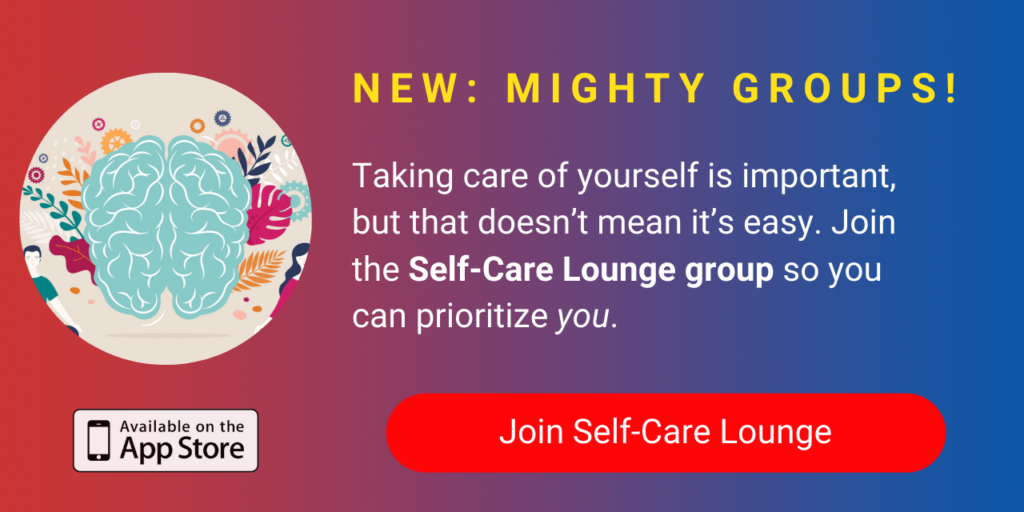“Allow yourself to feel all of your feelings.”
This is one of those wellness clichés that sounds so simple, but can prove incredibly hard to do.
I always aim for the goal of being willing and wanting to allow myself to feel all of my emotions, even the challenging ones like fear, anxiety, sadness, restlessness, hopelessness, etc. When I am in a calm, grounded and loving place, being compassionate to myself during these emotional storms seems like a good plan. However, despite intending and planning to be kind to myself through difficult feelings, I have found it is actually much harder to do in the moment.
For example, last night, I felt “off.” An all-day migraine attack had left me emotionally and physically exhausted. I’d pushed through pain to try to be as present as possible for the hustle and bustle of my brother moving out of our home and into his own apartment. And, I was absorbing the shock of extended coronavirus (COVID-19) shelter-in-place orders in New Orleans, forcing the cancellation of an important medical boards exam my fiancé had been scheduled to take. We had been focusing all of our energies and plans on this exam for the better part of a year and by the time evening approached, I felt myself slipping down into the uncertainty of the next few months with a seemingly paper-thin emotional resilience.
I knew these big, raw feelings were spurred primarily by exhaustion and exasperation brought on by a day of such constant pain. I did my best to calm my feelings by dutifully naming and noticing the emotions stirring within me and trying to treat myself with kindness. But, I was also in a place where sitting with those feelings was the last thing I felt like doing. I was tired and grumpy, and attempting to settle into my feelings was met with a lot of internal, impatient resistance. The idea of noticing and allowing discomfort and overwhelm to exist without trying to make it go away felt really, really hard.
I kept telling my fiancé, “but I’m just so tired, I’m feeling so completely ‘off,’ I’m so sad…” When I heard myself saying these things out loud, as if they were problems that needed to be solved, I realized that the best thing I could do in that moment was to just feel my feelings.
It’s a relatively new practice for me to allow myself to “feel all of my feelings” without expecting an emotional resolution. I’ve learned to accept that I’ve “felt the feels” in the “right” way even if they still remain with me after I’ve given them the space to exist without trying to alter them.
I’ve realized there is no timeline for how long certain emotions need to be felt in order to be ready to dissipate, and that it is my responsibility to look after each one that surfaces with loving, patient tenderness.
Below I’m sharing some practical tips and strategies I use to actually do the #feelyourfeels that is so popular on the internet these days. I hope some of it is helpful for you!
1. Name your emotions out loud (or write them down on paper).
Naming feelings out loud, or writing them down if I am alone (or don’t have a willing listener nearby) is a fast way for me to “deescalate” emotional intensity. I find that most of the more difficult emotions (like fear, anxiety, helplessness, etc…) have a far larger shadow and scarier storyline when they exist solely in my thoughts. When I acknowledge whatever I’m feeling through speaking it out loud or writing it down, I can choose to approach emotions with the objective of observing without fixing.
If I’m talking to someone close to me, I’ll even say, “I really just want to talk about how I’m feeling without looking for solutions,” to let them know exactly how they can support me. In a similar way, if I am journaling about difficult emotions, I give myself space to just write about the experience without jumping ahead to brainstorming strategies to change whatever is coming up for me.
2. Remind yourself that feeling hard feelings feels hard.
This one seems too obvious to write down, yet it’s a reminder I need every single time I try to hold space for my challenging emotions. There is some part of me that assumes that if I was “feeling my feelings” the “right” way and was truly rooted in loving compassion, then the experience wouldn’t be unpleasant.
However, I know now that it is possible to hold loving space for an emotional storm within, and in that very moment, to simultaneously feel the full velocity of the winds whip and wail as it rages. It can be physically painful to really allow feelings of grief, sadness, hopelessness or frustration to fully express themselves. I try to constantly remind myself that this work is hard work — that when feeling hard feelings feels hard, it doesn’t mean I’m doing anything wrong — in fact, it usually means I’m doing something right.
3. Release the need to get to the “feeling better” stage quickly.
I’m a checklist girl, and when I set aside time to “feel my feelings” I want to do it, complete it and then move on to the next (hopefully more fun) task. Unfortunately, dealing with heavy emotions is usually not quite so straightforward. I’ve learned that really “feeling my feelings” means being willing to do so without the expectation that I will be “rewarded” with a speedy emotional resolution. Often, my feelings have their own timeline, and when I commit to honoring whatever comes up, I’m not the one who gets to decide when I’m done.
As I said earlier, I’ve had to get comfortable with going to sleep without “solving” heavy emotions and leaning into weeks where I just feel lower than usual. Emotions are always temporary visitors, and one of the most compassionate things we can do for ourselves is to be patient with the “undesirable” ones, resisting the temptation to rush or push them out before they are ready.
4. Maintain a “bird’s-eye view” observer seat.
Thanks to my mindfulness practice, I have a library of metaphors that I draw on when I notice big feelings inside of me and want to allow myself to experience them without becoming them. One of my favorites is to imagine my mind like a big tall apartment building with certain windows lit up. As the observer, I sit on the other side of the street looking in the various windows and lovingly notice what is going on. Some days there might be crying in one window, an argument in another or someone hopelessly gazing out a window seemingly right through me from another. Relating to my thoughts this way allows me to bring the same loving observance to my emotions. Even if I look across and see one of the rooms on fire, I can watch the fire and feel the fear and pain (and maybe even call 911 to send in some emotional backup), but avoid becoming engulfed by the flames.
A second metaphor I draw on often is floating on a cloud above the weather. When difficult emotions arise, I can literally see myself down on the ground experiencing a torrential downpour or hurricane-force winds. I feel all of the fear and discomfort, but can also watch myself from above, experiencing it.
Cultivating this “bird’s-eye view” observer seat is the way I experience hard emotions without being swept away by them completely. There are so many different metaphors, it’s important to find one that works for you and really allows you to visualize and differentiate the “you” who can notice the emotions that you experience. It takes practice, lots of practice, but is so worth it when you start to get glimpses of it!
5. Engage in nurturing self-care without expecting that it will “fix” difficult emotions.
Oh boy! This is a biggie and something that has helped me both manage my emotions and physical chronic pain. The things I do on a regular basis to nurture my self-care — like my gratitude practice, seeking pockets of OK and joy, meditating, journaling, gentle yoga flows — are all little “coins” that fill up my “feeling nurtured piggybank.”
What I’ve learned is that engaging in these practices when things are challenging still fills up my well-being piggybank, even if doing so doesn’t immediately change how I am feeling emotionally. I’ve started to release some of the pressure and self-imposed expectation that every act of self-care should lead to me immediately feeling better. Some days, self-care is just about putting coins into the bank and showing yourself that you still love and care for your well-being even when the going gets tough.
I would love to hear your thoughts and any hacks, tricks or tools you’ve been using during this COVID-19 crisis to allow room for yourself to feel your feelings. I hope that some of this was helpful or resonated with you, and as always, sending so much love your way.
A version of this article was previously published on the author’s blog.
Image via contributor


